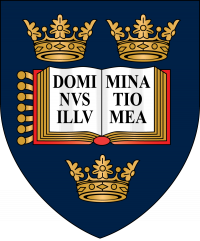In British Columbia this summer Tony Rose (pictured), a former Engineer Superintendent on Canada’s Pacific naval base at Esquimalt, told his story of triumphing over homophobia. Tony, now 80, did so as part of a new move towards better representing the past of people who in Canada are called Two-Spirit, Lesbian, Gay, Bisexual, Transgender, Queer or Questioning (2SLGBTQ).
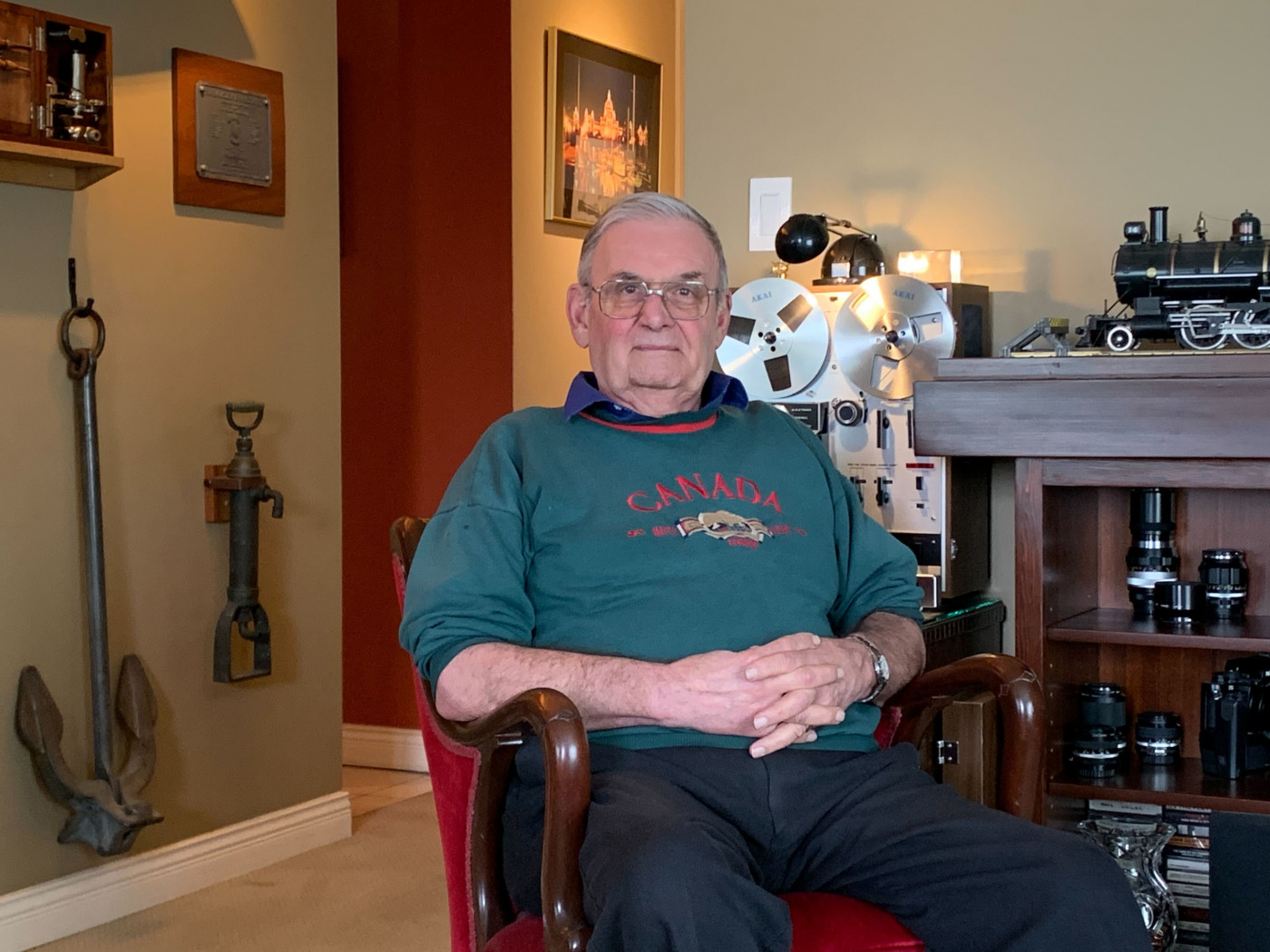
Tony Rose, former Engineer Superintendent
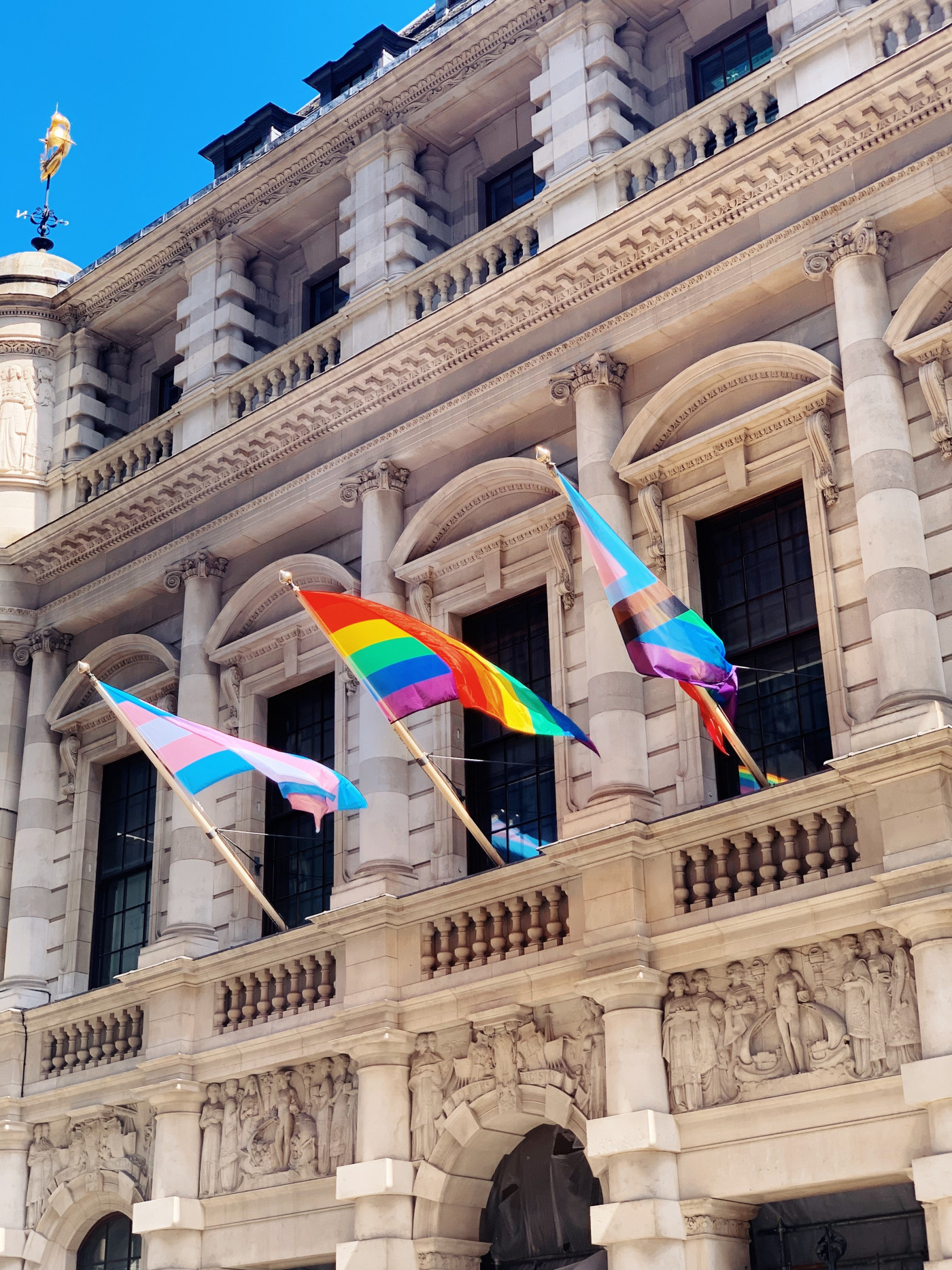
LGBTQI+ Pride Flags at 71 Fenchurch Street

Tony Rose, former Engineer Superintendent

LGBTQI+ Pride Flags at 71 Fenchurch Street
This is how Tony’s story goes. He’d worked on Arctic icebreakers, weather ships, ferries, and all sorts of vessels for 30 years at the Seaspan International Giant Tugboat Fleet. Always he knew he had to keep his sexuality secret. From the 1950s to 1990s Canada’s gay purge was at its height, affecting an estimated 9,000 lives.
In 1972 he got hired as Second Engineer of the armed forces research ship CNAV Endeavour ... and then called into the office. The Auxiliary Fleet Engineer Superintendent snarled at him that the Department of National Defence would not be hiring him....EVER!
Worse, Tony was accused of being a paedophile too. The common assumption then was that every ‘pervert’ abused children.
Many years after retiring from Seaspan Tony got that Engineer Superintendent job. He had won. Now he feels ‘incredibly vindicated’.
Even better, he is just contributed his story to the Maritime Museum of British Columbia (MMBC) in Victoria, whose path-breaking exhibition Queer at Sea runs from now until November.
Even better again, in a gay bar he met a man who had been the uncomfortable-looking witness when the Engineer Superintendent dumped him. The witness thanked Tony for not outing him that day. It was an implicit revelation that, after all, Tony had not been the only gay in his profession. Indeed, the Canadian armed forces are now very progressive; an out former Rear Admiral, Luc Cassivi, is Director General, Canadian Armed Forces.
Tony is one of fifteen story-givers helping put Canadian 2SLGBTQ maritime history on the map. In doing so, these tug operatives and recreational boaties, naval personnel and divers, lighthouse women, and coastguards have contributed to the world’s progress towards embracing equality, diversity and inclusion (EDI).
The exhibition is a success, despite some early homophobic comments on Facebook.
Contributors express such joy and gratitude that the queer maritime story is being told. Their words include ‘feeling seen and respected.’ And ‘this is a long time coming.’
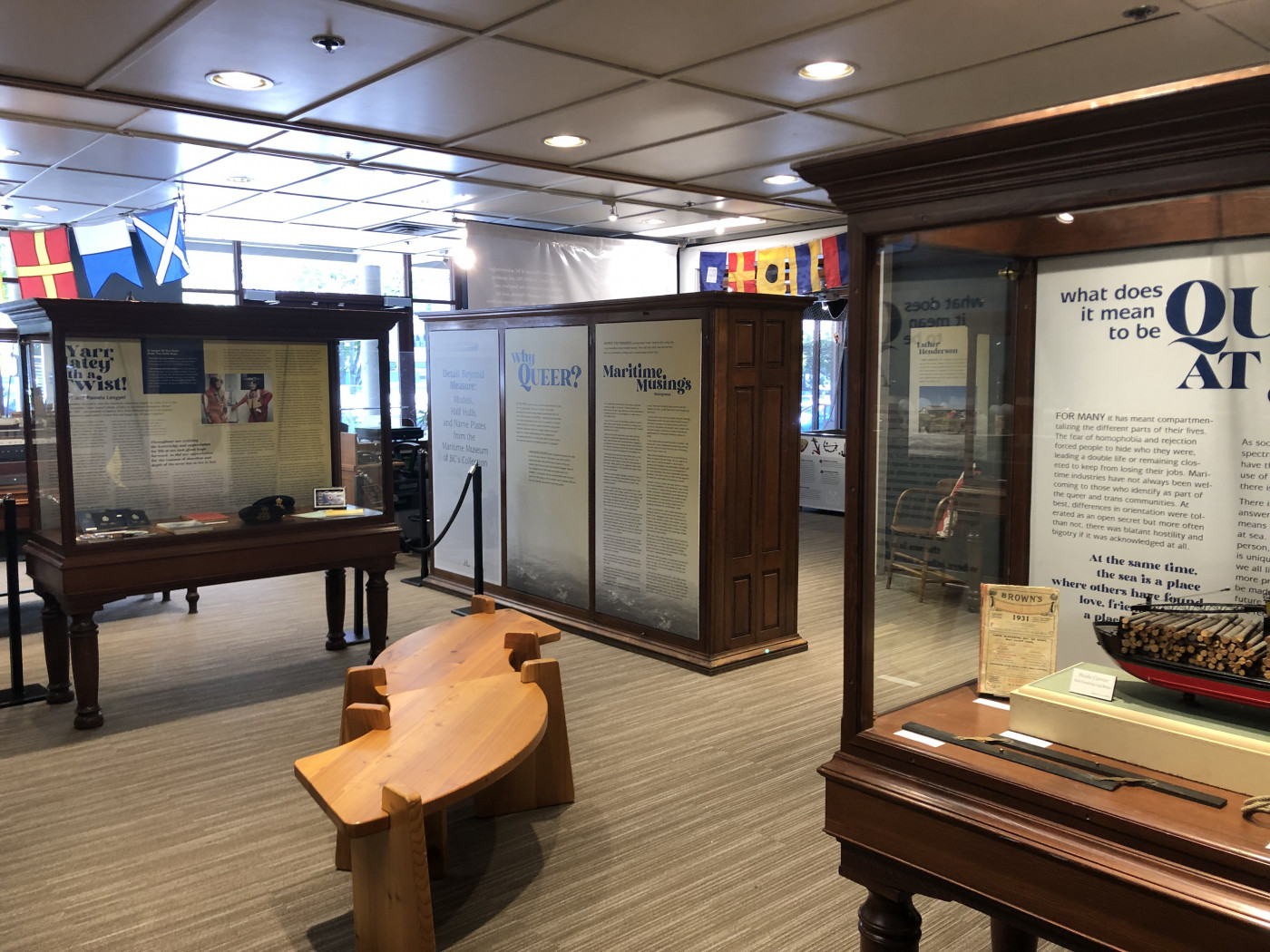
Queer at Sea Exhibition
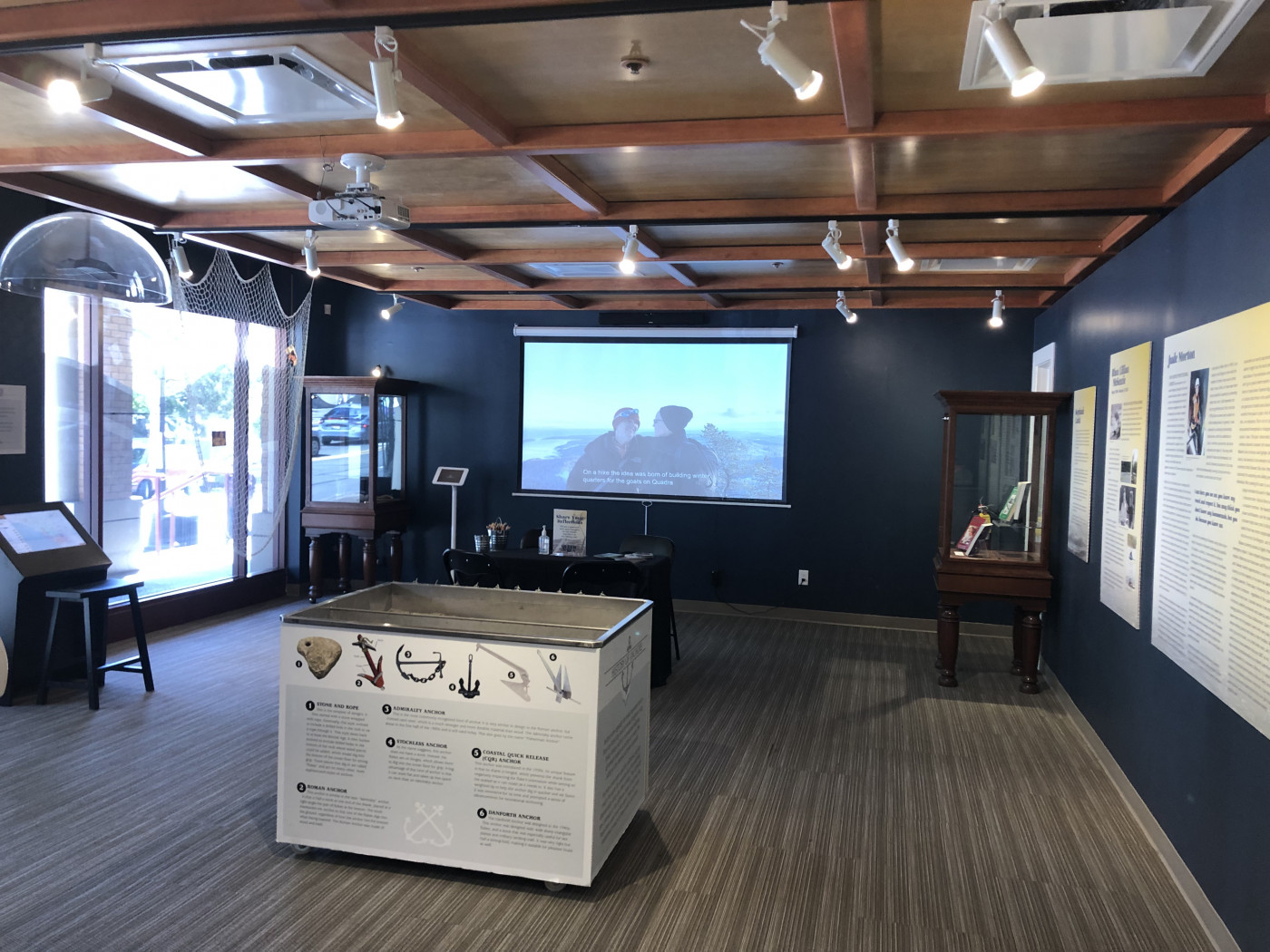
Queer at Sea Exhibition
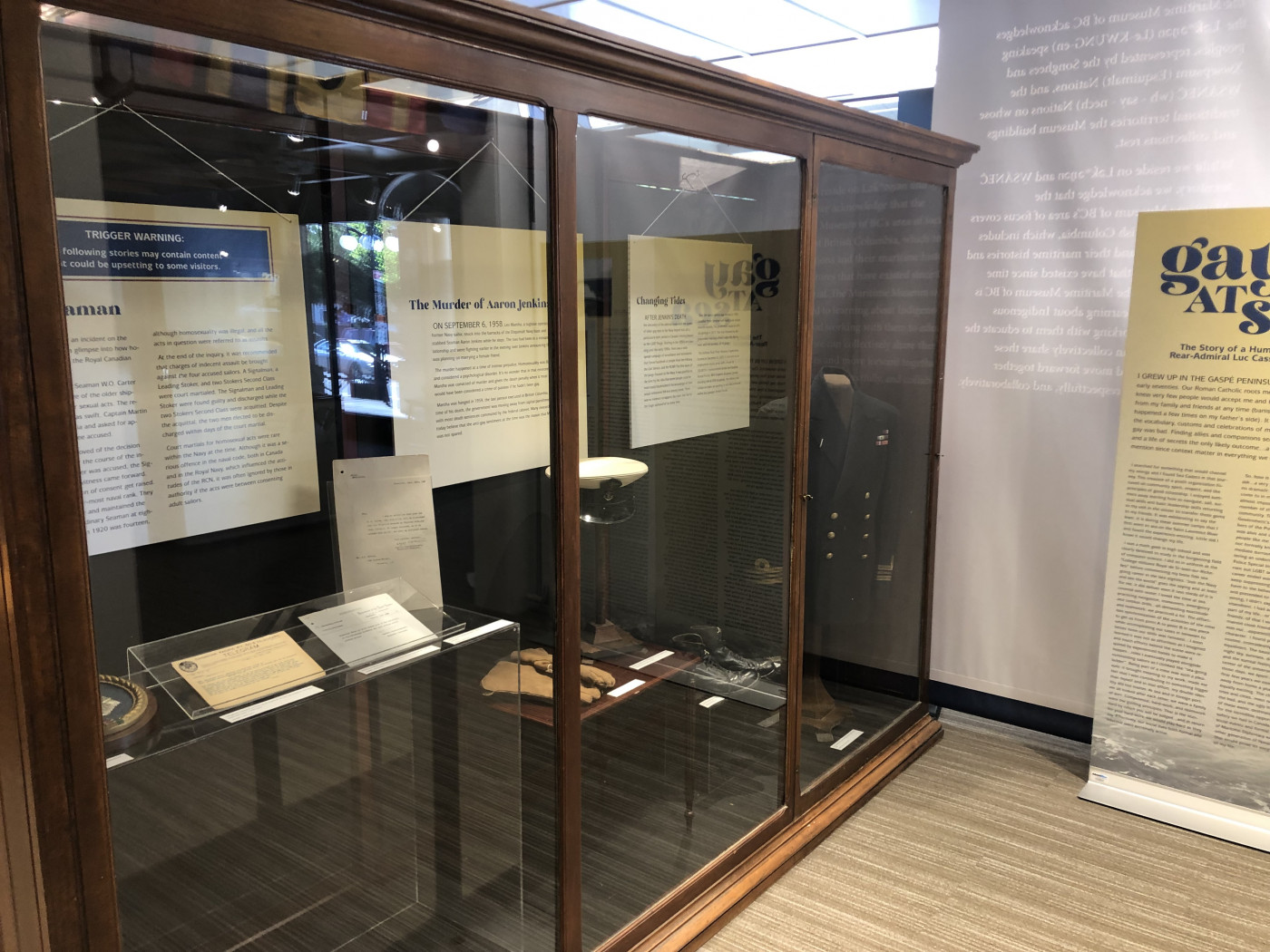
Queer at Sea Exhibition

Queer at Sea Exhibition

Queer at Sea Exhibition

Queer at Sea Exhibition
‘The response has been overwhelmingly positive,’ MMBC Collections and Exhibits Manager Heather Feeney told me in meta-stories over Zoom. However, she was shocked to find that ‘Some contributors expressed surprise that a museum would be interested in their stories.’
I had tears of recognition in my eyes because I too had been moved by similar tales when co-curating Hello Sailor! the travelling Merseyside Maritime Museum exhibition from 2006 to 2019.
Hello Sailor! is credited with being the world’s first exhibition about LGBT+ seafarers. (The exhibition had grown out of Hello Sailor!, a book I’d co-written with Paul Baker, based on oral history interviews with seafaring men. And it had an offshoot, growing into the first ever archive on LGBT+ seafarers, Sailing Proud)
Queer at sea is by no means a fluke. On the contrary, it is part of a pattern growing globally for years. MMBC’s decided to mount this exhibition partly because a board member’s interest was triggered by seeing an expanded version of Hello Sailor! in Halifax, Nova Scotia in 2011.
In 2021 the Maritime Museum of Barcelona staged the art-based Desire Flows Like the Sea exhibition, with its Tom of Finland butch sailor archetypes rather than a real-world awareness that LGBT+ maritime people are just people, very varied, and not sex-obsessed. Queer Britain, London’s first LGBT+ museum, opened in May 2022. Since 2020, Maritime UK has been running four diversity networks including Pride. In October 2022, Bergen Maritime Museum’s exhibition Queer Seafarers will open and Amsterdam Maritime Museum continue to collect oral history tales for its project on LGBT+ seafarers.
Because of all these museums’ interest a new virtual network is forming. The Rainbow Seas coalition will offer mutual support to maritime museum workers to ensure that the lives of excluded real people, not just Jack Tar stereotypes, are put on the nuanced record.
New visitors – including trans people in Victoria’s MMBC are now being attracted to maritime museums. Inspired museologists are learning more about the past’s hidden crannies and unexpected meanings of ships and seas. Justice is being done tenderly. The rainbow sea is swelling and, hopefully, washing away the old homophobia.
On behalf of the Heritage & Education Centre, we'd like to say thank you to Dr Jo Stanley for this interesting reflection on LGBT+ representation in maritime discourse.
To further your interest and research into this subject, please download the reading list pdf.
Download here for a 40% discount voucher for Dr Jo Stanley's Book, Hello Sailor!




